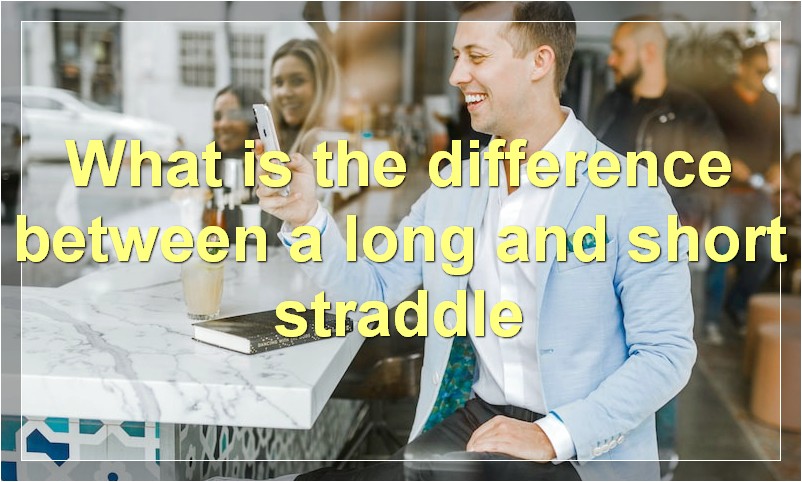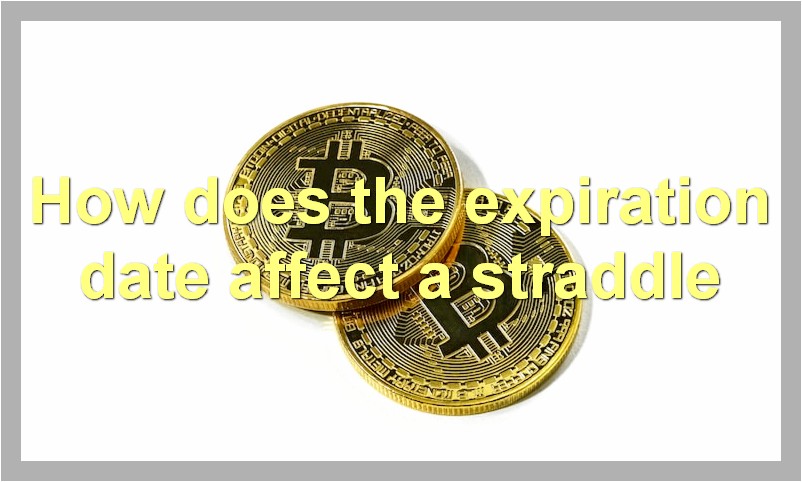If you’re looking for a way to potentially make more money from your investments, then you may want to consider straddle options. In this article, we’ll give you a basic overview of what straddle options are and how they work.
What is an option straddle
An option straddle is an options trading strategy that involves buying a call and put with the same strike price, expiration date, and underlying asset. The strategy is used when the trader believes the underlying asset will experience significant volatility in the near future, but is unsure of the direction it will move.
If the underlying asset moves higher than the strike price, the call option will increase in value and offset some of the losses from the put option. If the underlying asset moves lower than the strike price, the put option will increase in value and offset some of the losses from the call option. The goal of this strategy is to make a profit regardless of which direction the underlying asset moves.
One downside of this strategy is that it requires a larger investment than buying a call or put option alone. This is because you are effectively buying two options instead of just one. The increased investment means there is also more risk involved.
Despite the increased risk, option straddles can be an effective way to profit from volatility. They can also help hedge against downside risk if you are bullish on a stock but concerned about a short-term pullback.
What is the difference between a long and short straddle

A long straddle is a option strategy where the investor holds a long position in both a call and put with the same strike price and expiration date. A short straddle is where the investor holds a short position in both a call and put with the same strike price and expiration date.
How do you calculate the break-even point for a straddle
A straddle is an options strategy that involves holding both a call and put option on the same underlying asset, with the same strike price and expiration date. The break-even point for a straddle is the price at which the combined value of the two options equals the original premium paid for the position.
To calculate the break-even point, you first need to determine the premium paid for the straddle. This is simply the sum of the premiums paid for the call and put options. Once you have the premium paid, you can then use the following formula:
Break-even point = Strike Price + Premium Paid / 2
For example, let’s say you bought a straddle on XYZ stock with a strike price of $100 and a premium of $10 for both the call and put options. The break-even point would be calculated as follows:
Break-even point = $100 + ($10 * 2) / 2
Break-even point = $110
What is the maximum profit or loss for a straddle
In finance, a straddle is an investment strategy involving the purchase or sale of particular options so as to profit from a rise or fall in the underlying asset’s price. The maximum profit for this strategy is achieved when the price of the underlying asset at expiration is exactly the same as the strike price. The maximum loss is also equal to the strike price, and is incurred when the price of the underlying asset at expiration is exactly opposite of the strike price.
What factors affect the profitability of a straddle
The profitability of a straddle is affected by the underlying asset’s price, the strike price of the options, the time remaining until expiration, the volatility of the underlying asset, and the interest rates.
How does the expiration date affect a straddle

If you are trading options, it is important to be aware of how the expiration date can affect your straddle. A straddle is an options strategy that involves simultaneously buying a put and a call on the same underlying asset, with the same strike price and expiration date. The goal of a straddle is to profit from a move in either direction.
If the expiration date is close, and the straddle is near the at-the-money (ATM) level, there is a greater chance that one of the options will expire worthless. This is because ATM options have a 50/50 chance of expiring in-the-money or out-of-the-money. As expiration approaches, the time decay (theta) accelerates, resulting in a greater loss of value for both the put and the call.
If the expiration date is further out, there is more time for the underlying asset to move and for one of the options to become in-the-money. This results in less time decay and a higher probability of profiting from the straddle.
When trading a straddle, it is important to be aware of how the expiration date can affect the trade. If expiration is close, there is a greater chance that one side of the trade will expire worthless. If expiration is further out, there is more time for the underlying asset to move and for one of the options to become in-the-money.
What is the effect of implied volatility on a straddle
Implied volatility is a key concept in options trading that has a significant impact on the price of a straddle. In general, the higher the implied volatility, the higher the straddle price will be. This is because when implied volatility is high, there is more uncertainty in the markets and this leads to a higher probability of a large price movement occurring. As a result, traders are willing to pay more for straddles when implied volatility is high.
How does the underlying price affect a straddle
When trading a straddle, the underlying price will have an affect on the overall strategy. If the underlying price is close to the strike price of the straddle, then it is likely that the options will expire worthless and the trader will lose money. However, if the underlying price is further away from the strike price, then there is a greater chance that one of the options will be in the money at expiration and the trader will make a profit.
Should I buy or sell a straddle
If you’re considering purchasing a straddle, there are a few things you should take into account before making your decision. First, you need to have a firm understanding of what a straddle is and how it works. A straddle is an options strategy that involves buying both a call and a put on the same underlying asset, with the same strike price and expiration date. This strategy is often used when an investor expects the price of the underlying asset to move significantly, but is unsure of which direction it will move in.
The biggest advantage of buying a straddle is that it allows you to profit from a large price movement in either direction. However, there are a few potential downsides to this strategy as well. First, buying a straddle requires you to pay for two option contracts, which can be expensive if the underlying asset doesn’t make a big move. Second, even if the underlying asset does make a large move, your profits may be limited if it doesn’t move in the direction you were expecting.
Ultimately, whether or not you decide to buy a straddle will come down to your assessment of the market and your own risk tolerance. If you believe that the market is about to make a big move but are unsure of which direction it will go, buying a straddle may be a good way to profit. However, if you’re not comfortable with the risks involved, you may want to consider another options strategy.
What are some common mistakes traders make with straddles
Some common mistakes that traders make with straddles are:
1. Not knowing when to exit the trade.
2. Not having a plan for how to manage the trade.
3. Not understanding the underlying security.
4. Letting emotions guide the trade.

